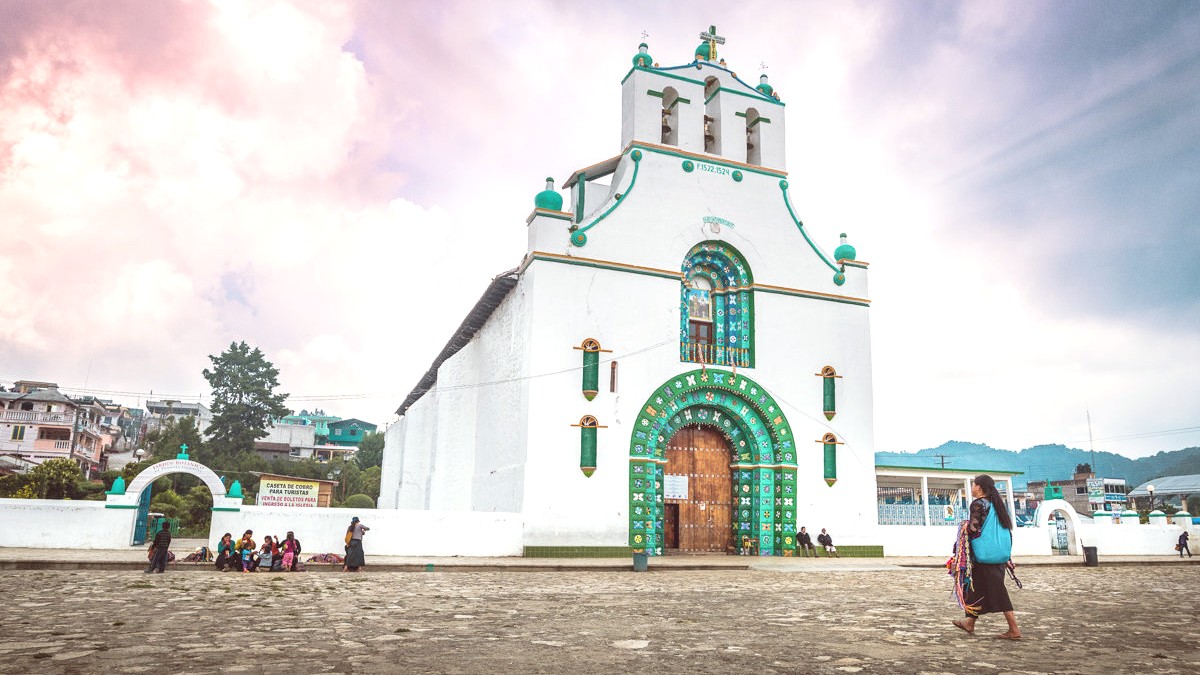
Tabasco And Chiapas, Mexico
San Juan Chamula: A Tzotzil Mayan village with unique syncretic religious practices. Ancient Mayan beliefs blend with Catholic rituals. The local church, Templo de San Juan, is a sacred space where traditional healers perform ceremonies. Strict rules apply inside, notably regarding photography, which is forbidden.
Zinacantán: Another Tzotzil Mayan village. Find weaving cooperatives where local women demonstrate traditional backstrap loom techniques.
Travel options for nearby sites vary in convenience and experience.
A spectacular natural canyon near Tuxtla Gutierrez. Vertical walls up to 1,000 meters high, traversed by the Grijalva River. Boat tours reveal towering cliffs, caves, wildlife like crocodiles, spider monkeys, and various birds. Chiapa de Corzo is a charming colonial town on the Grijalva River, known for its Mudejar-style fountain (La Pila).
Chamula/Zinacantán: Independent travel via colectivos is easy and inexpensive. A guided tour offers cultural context, explaining complex religious practices and ensuring respectful interaction, notably in San Juan Chamula. A guide is recommended for cultural immersion.
Chiapas boasts impressive natural wonders beyond the canyon.
Stunning, multi-colored lakes and cenotes, surrounded by pine forests, near the Guatemalan border. Opportunities for hiking, kayaking, and swimming.
Series of impressive waterfalls, including Velo de Novia. Cascades flow into brilliant turquoise pools. Opportunities for swimming, zip-lining, and hiking.
Both Montebello Lakes and El Chiflón waterfalls offer diverse, breathtaking landscapes, from serene lakes to powerful cascades and lush forests.
A series of stunning, multi-colored lakes and cenotes, surrounded by pine forests. Colors range from emerald green to turquoise and deep blue. Opportunities for hiking, kayaking, and swimming (in specific, safe areas).
A series of impressive waterfalls along the San Vicente River, including Velo de Novia. Cascades flow into brilliant turquoise pools. The site offers opportunities for swimming in designated areas, zip-lining over the falls, and hiking.
For historical and cultural exploration, longer excursions reveal ancient Mayan civilizations.
One of Mexico's most significant Mayan archaeological sites. Well-preserved temples, intricate carvings, and royal tombs within a lush jungle. A UNESCO World Heritage site known for advanced architecture and rich history.
Remote Mayan sites deep in the Lacandon Jungle. Yaxchilán is known for intricate stelae and carved lintels, accessed via a boat trip on the Usumacinta River. Bonampak is famous for remarkably preserved ancient Mayan murals, a rare glimpse into Mayan artistic traditions.
Visits to coffee plantations in the surrounding highlands reveal Chiapas's important coffee industry. Understand the process from bean to cup.
While a full-day trip from San Cristobal to Palenque is possible, it makes for a very long day.
Roads to Palenque are winding. Be prepared for motion sickness.
Be prepared for heat, humidity, and insects at jungle sites.
Hiring certified guides at archaeological sites enriches your visit.
San Cristobal can serve as a starting or ending point for longer regional explorations.
After San Cristobal, spend 1-2 nights in Palenque for ruins and Roberto Barrios waterfalls. Consider an additional night in a jungle lodge near Yaxchilán/Bonampak for a deep jungle experience.
A logical next destination for cultural travelers. An overnight bus connects San Cristobal and Oaxaca. Spend 3-4 days exploring its unique offerings.
Cross the border overland from Chiapas into Guatemala, making Antigua a common next stop for travelers heading further south into Central America.
Start San Cristobal, then Palenque, Campeche, Mérida, finally Cancun or Riviera Maya. This route covers major Mayan sites and colonial cities.
Begin Mexico City, south to Oaxaca, east to San Cristobal, then Palenque and possibly Villahermosa, Campeche, or Mérida. A comprehensive experience of southern Mexico's diverse regions.
From Chiapas, cross into Guatemala for Antigua, then continue south. A common route for extended Central American travel.